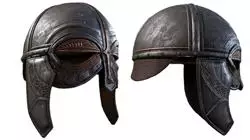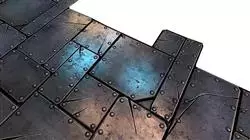University certificate
The world's largest faculty of video games”
Introduction to the Program
Become a true expert in the creation of textures for Hard Surface"

Learning how to create textures for the Hard Surface technique is easier with this training. Designed to strengthen and perfect texturing techniques, this Postgraduate certificate responds to the increasing demand for this skill. Thanks to the methodology that TECH Global University uses, based on Relearning and Learning by Doing, learning is achieved in its theoretical dimension, but above all practical.
In order to learn how to create different textures, the student will begin this training by identifying variations in surface materials. Subsequently, you will delve into texturing techniques such as roughening, polishing and oxides. The objective is to acquire a broad understanding of the differences between them.
The contents prepare students for possible professional challenges and enable them not only to know how to create textures, but also to correct them and be able to give vivacity and dynamism to the projects they take on.
This Postgraduate certificate in Hard Surface Texture Creation is characterized by being totally online. The multimedia materials and teaching resources will always be available to the student on the virtual platform, so that it will only be necessary to have an electronic device and internet connection to download the material and start developing the content proposed by the best teaching staff.
Be prepared to face professional texturing challenges and approach with a critical eye the new projects you take on as a video game graphics and image designer”
This Postgraduate certificate in Hard Surface Texture Creation contains the most complete and up-to-date educational program on the market. Its most notable features are:
- The development of practical cases presented by experts in Hard Surface Texture Creation
- The graphic, schematic, and practical contents with which they are created, provide practical information on the disciplines that are essential for professional practice
- Practical exercises where self-assessment can be used to improve learning
- Its special emphasis on innovative methodologies
- Theoretical lessons, questions to the expert, debate forums on controversial topics, and individual reflection assignments
- Content that is accessible from any fixed or portable device with an Internet connection
With the Relearning and Learning by Doing methodologies, learn in an eminently practical way how to model with texturing for Hard Surface”
The program’s teaching staff includes professionals from the sector who contribute their work experience to this training program, as well as renowned specialists from leading societies and prestigious universities.
The multimedia content, developed with the latest educational technology, will provide the professional with situated and contextual learning, i.e., a simulated environment that will provide immersive education programmed to learn in real situations.
This program is designed around Problem-Based Learning, whereby the professional must try to solve the different professional practice situations that arise throughout the program. This will be done with the help of an innovative system of interactive videos made by renowned experts.
Start applying and distinguishing the different texturing techniques for Hard Surface modeling with this convenient online program"

A Postgraduate certificate that specializes your professional career in the most convenient way: online, flexible and at your own pace"
Why study at TECH?
TECH is the world’s largest online university. With an impressive catalog of more than 14,000 university programs available in 11 languages, it is positioned as a leader in employability, with a 99% job placement rate. In addition, it relies on an enormous faculty of more than 6,000 professors of the highest international renown.

Study at the world's largest online university and guarantee your professional success. The future starts at TECH”
The world’s best online university according to FORBES
The prestigious Forbes magazine, specialized in business and finance, has highlighted TECH as “the world's best online university” This is what they have recently stated in an article in their digital edition in which they echo the success story of this institution, “thanks to the academic offer it provides, the selection of its teaching staff, and an innovative learning method aimed at educating the professionals of the future”
A revolutionary study method, a cutting-edge faculty and a practical focus: the key to TECH's success.
The most complete study plans on the university scene
TECH offers the most complete study plans on the university scene, with syllabuses that cover fundamental concepts and, at the same time, the main scientific advances in their specific scientific areas. In addition, these programs are continuously being updated to guarantee students the academic vanguard and the most in-demand professional skills. In this way, the university's qualifications provide its graduates with a significant advantage to propel their careers to success.
TECH offers the most comprehensive and intensive study plans on the current university scene.
A world-class teaching staff
TECH's teaching staff is made up of more than 6,000 professors with the highest international recognition. Professors, researchers and top executives of multinational companies, including Isaiah Covington, performance coach of the Boston Celtics; Magda Romanska, principal investigator at Harvard MetaLAB; Ignacio Wistumba, chairman of the department of translational molecular pathology at MD Anderson Cancer Center; and D.W. Pine, creative director of TIME magazine, among others.
Internationally renowned experts, specialized in different branches of Health, Technology, Communication and Business, form part of the TECH faculty.
A unique learning method
TECH is the first university to use Relearning in all its programs. It is the best online learning methodology, accredited with international teaching quality certifications, provided by prestigious educational agencies. In addition, this disruptive educational model is complemented with the “Case Method”, thereby setting up a unique online teaching strategy. Innovative teaching resources are also implemented, including detailed videos, infographics and interactive summaries.
TECH combines Relearning and the Case Method in all its university programs to guarantee excellent theoretical and practical learning, studying whenever and wherever you want.
The world's largest online university
TECH is the world’s largest online university. We are the largest educational institution, with the best and widest online educational catalog, one hundred percent online and covering the vast majority of areas of knowledge. We offer a large selection of our own degrees and accredited online undergraduate and postgraduate degrees. In total, more than 14,000 university degrees, in eleven different languages, make us the largest educational largest in the world.
TECH has the world's most extensive catalog of academic and official programs, available in more than 11 languages.
Google Premier Partner
The American technology giant has awarded TECH the Google Google Premier Partner badge. This award, which is only available to 3% of the world's companies, highlights the efficient, flexible and tailored experience that this university provides to students. The recognition as a Google Premier Partner not only accredits the maximum rigor, performance and investment in TECH's digital infrastructures, but also places this university as one of the world's leading technology companies.
Google has positioned TECH in the top 3% of the world's most important technology companies by awarding it its Google Premier Partner badge.
The official online university of the NBA
TECH is the official online university of the NBA. Thanks to our agreement with the biggest league in basketball, we offer our students exclusive university programs, as well as a wide variety of educational resources focused on the business of the league and other areas of the sports industry. Each program is made up of a uniquely designed syllabus and features exceptional guest hosts: professionals with a distinguished sports background who will offer their expertise on the most relevant topics.
TECH has been selected by the NBA, the world's top basketball league, as its official online university.
The top-rated university by its students
Students have positioned TECH as the world's top-rated university on the main review websites, with a highest rating of 4.9 out of 5, obtained from more than 1,000 reviews. These results consolidate TECH as the benchmark university institution at an international level, reflecting the excellence and positive impact of its educational model.” reflecting the excellence and positive impact of its educational model.”
TECH is the world’s top-rated university by its students.
Leaders in employability
TECH has managed to become the leading university in employability. 99% of its students obtain jobs in the academic field they have studied, within one year of completing any of the university's programs. A similar number achieve immediate career enhancement. All this thanks to a study methodology that bases its effectiveness on the acquisition of practical skills, which are absolutely necessary for professional development.
99% of TECH graduates find a job within a year of completing their studies.
Postgraduate Certificate in Hard Surface Texture Creation
Hardsurface texturing is a process that involves designing and applying textures for rigid or hard objects and surfaces, typically in the field of 3D animation and video games. The texture applied helps objects look more realistic, detailed and different from each other.
Texturing for 3D Hard Surface models is a process that involves the application of detailed, realistic surfaces that simulate real-life materials and patterns. The goal is to create a texture that matches the shape and geometry of the model in question, and gives it a more natural and authentic look. <7p>
Texture creation process for 3D Hard Surface models.
Material selection:
First, choose the material to be simulated on the object, such as metal, glass, leather, etc.
Creation of a base texture: A colored base texture is created that will serve as the basis for the creation of the more detailed textures. This base texture is used as a starting point for the creation of the shadow maps.
Shadow map development: The necessary shadow maps are created to apply shadow detail and realism to the texture.
Creation of additional textures: Additional textures, such as roughness, gloss and reflection textures, are added to create a more realistic effect.
Testing and tweaking: Real-time tests are performed to check that the texture fits the model well and see any necessary adjustments that need to be made to improve the appearance.
In this process texture editing programs, such as Adobe Photoshop, Substance Painter or Quixel, are used to paint the textures manually or by using photographs or pattern generation. The process is done in layers that are layered to create the desired aesthetic. These textures can be anything from polished metal to weathered fabric.
Creating textures for 3D Hard Surface models involves selecting the materials to be simulated, creating a base texture, developing the shadow maps, adding additional textures, and performing necessary testing and adjustments.







